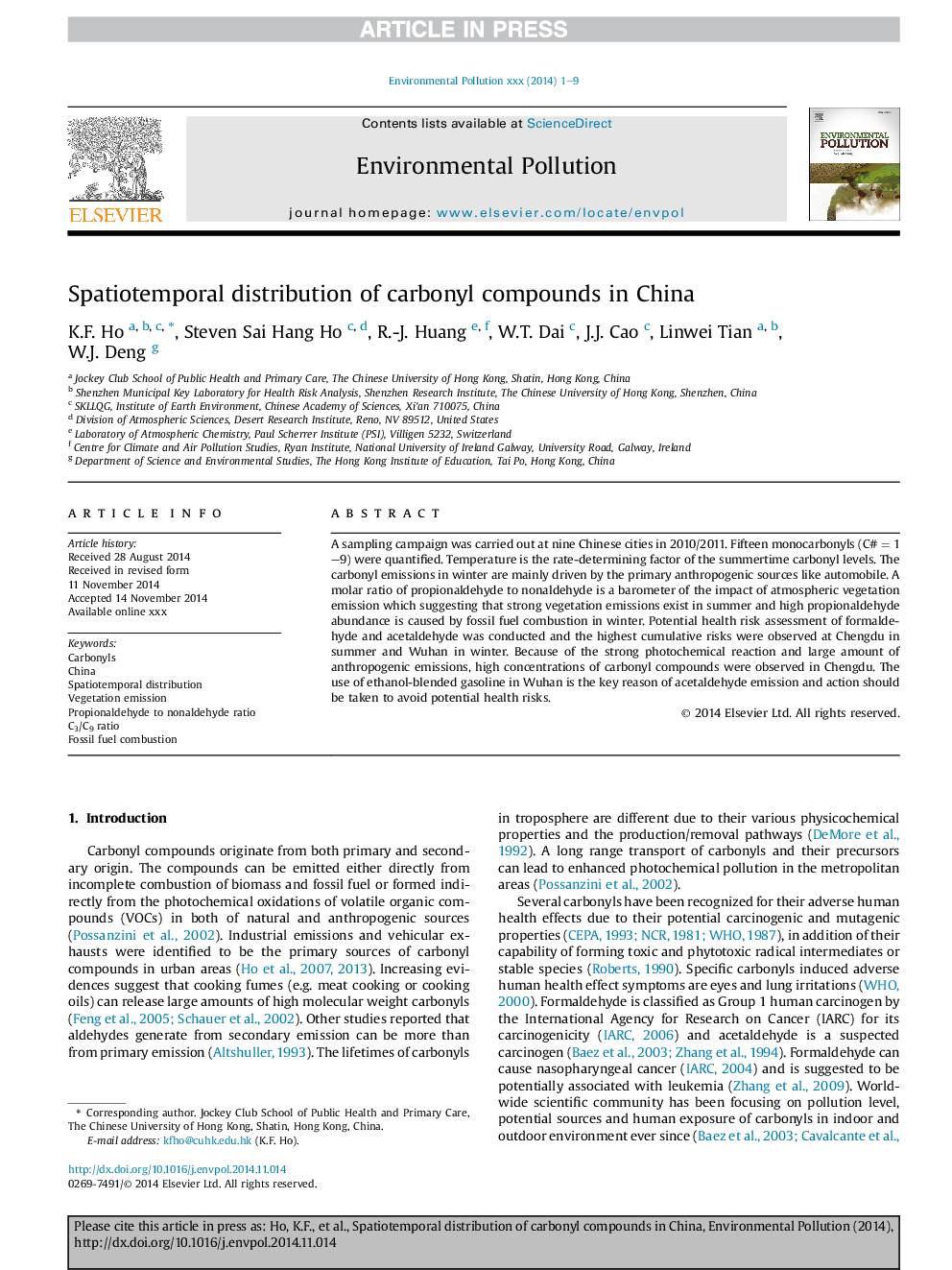| Article ID | Journal | Published Year | Pages | File Type |
|---|---|---|---|---|
| 6316476 | Environmental Pollution | 2015 | 9 Pages |
Abstract
A sampling campaign was carried out at nine Chinese cities in 2010/2011. Fifteen monocarbonyls (C#Â =Â 1-9) were quantified. Temperature is the rate-determining factor of the summertime carbonyl levels. The carbonyl emissions in winter are mainly driven by the primary anthropogenic sources like automobile. A molar ratio of propionaldehyde to nonaldehyde is a barometer of the impact of atmospheric vegetation emission which suggesting that strong vegetation emissions exist in summer and high propionaldehyde abundance is caused by fossil fuel combustion in winter. Potential health risk assessment of formaldehyde and acetaldehyde was conducted and the highest cumulative risks were observed at Chengdu in summer and Wuhan in winter. Because of the strong photochemical reaction and large amount of anthropogenic emissions, high concentrations of carbonyl compounds were observed in Chengdu. The use of ethanol-blended gasoline in Wuhan is the key reason of acetaldehyde emission and action should be taken to avoid potential health risks.
Related Topics
Life Sciences
Environmental Science
Environmental Chemistry
Authors
K.F. Ho, Steven Sai Hang Ho, R.-J. Huang, W.T. Dai, J.J. Cao, Linwei Tian, W.J. Deng,
